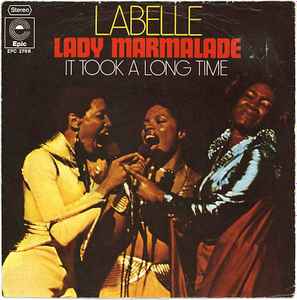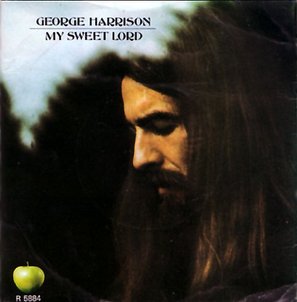 There are songs that serve as soundtracks to a moment, a season, or even a state of mind. Seals & Crofts’ “Summer Breeze” is one of those rare tracks that captures the very essence of warmth, relaxation, and wistful reflection. Released in 1972 on their album of the same name, it wasn’t just a soft rock hit — it became a defining statement of early 1970s American music, offering listeners a musical refuge from the turbulence of the era. The song’s gentle harmonies, delicate instrumentation, and evocative lyrics combine to create an auditory embodiment of a lazy, golden summer afternoon.
There are songs that serve as soundtracks to a moment, a season, or even a state of mind. Seals & Crofts’ “Summer Breeze” is one of those rare tracks that captures the very essence of warmth, relaxation, and wistful reflection. Released in 1972 on their album of the same name, it wasn’t just a soft rock hit — it became a defining statement of early 1970s American music, offering listeners a musical refuge from the turbulence of the era. The song’s gentle harmonies, delicate instrumentation, and evocative lyrics combine to create an auditory embodiment of a lazy, golden summer afternoon.
From the very first note of the signature electric piano riff, “Summer Breeze” exudes calm. That riff, simple yet elegant, instantly signals a sense of ease, immediately placing the listener in a space of comfort and warmth. It’s a sound that feels effortless, yet it’s meticulously crafted to evoke nostalgia, intimacy, and contentment. Paired with Jim Seals’ and Dash Crofts’ harmonized vocals, the song becomes more than just a listening experience — it’s an emotional journey.
The Songwriters as Storytellers
What makes “Summer Breeze” so effective is its lyrical simplicity coupled with emotional resonance. Jim Seals and Dash Crofts wrote lyrics that feel deeply personal, yet universally relatable. The opening lines — “See the curtains hangin’ in the window / In the evening on a Friday night” — immediately paint a vivid domestic scene. It’s intimate and specific, yet everyone can relate to the feeling of settling into the comfort of home after a week of work or travel.
The genius lies in how the duo juxtaposes these simple images with the evocative title and chorus: “Summer breeze makes me feel fine / Blowing through the jasmine in my mind.” The lyrics aren’t complicated or abstract; they don’t rely on grandiose metaphors or shocking imagery. Instead, they gently capture the ephemeral pleasure of summer — the sights, the scents, the subtle moments that linger in memory. There’s a universality to it that resonates across generations, and it’s this balance between the personal and the relatable that has cemented the song’s lasting appeal.
Seals and Crofts were masterful storytellers who could evoke emotion with precision. Every line in “Summer Breeze” serves a purpose: it builds imagery, sets a mood, and invites listeners into a private, almost sacred space. The song’s simplicity is deceptive — beneath it lies a deep understanding of musical pacing, lyrical phrasing, and emotional nuance.
Harmonies That Glide Like a Warm Wind
One of the standout features of “Summer Breeze” is the duo’s vocal interplay. Seals’ tenor and Crofts’ soft falsetto intertwine seamlessly, creating harmonies that are lush yet understated. Unlike the bombastic vocal acrobatics common in other soft rock tracks of the era, Seals & Crofts’ approach is gentle, soothing, and perfectly in tune with the song’s theme. Their voices drift and blend like the titular breeze, never overpowering the listener, yet always present and comforting.
The harmonies are particularly effective in the chorus, where their voices move in tandem, reinforcing the song’s emotional resonance. It’s a vocal approach that feels intimate, as though the listener has been invited into a private moment between the songwriters. In a time when much of popular music leaned on dramatic delivery or excess, “Summer Breeze” distinguished itself through restraint and elegance.
Instrumentation: Delicate Yet Dynamic
While the vocals are central to the track’s charm, the instrumentation is equally essential. The song begins with a clean, arpeggiated electric piano riff, which sets the mood instantly. The arrangement gradually builds, adding soft acoustic guitars, understated bass, and gentle percussion. The rhythm section never dominates; instead, it provides a steady, comforting pulse, allowing the melody and harmonies to take center stage.
The production of “Summer Breeze” also demonstrates the duo’s understanding of musical space. Each instrument has room to breathe, and the song’s sonic landscape is uncluttered and airy. Subtle embellishments, such as the light percussion or the occasional string flourishes, add depth without overwhelming the core melody. This careful arrangement mirrors the song’s lyrical theme: a relaxed, sun-dappled summer afternoon where everything feels harmonious and balanced.
The song’s bridge, featuring a slight dynamic swell, demonstrates the duo’s ability to create tension and release without sacrificing serenity. It’s a delicate balance — too much emphasis could disrupt the mood, but too little could render the track monotonous. Seals & Crofts navigate this line with expertise, maintaining engagement while preserving the song’s signature calm.
Context and Cultural Impact
“Summer Breeze” emerged at a unique moment in American history. The early 1970s were marked by social upheaval, political distrust, and lingering tensions from the Vietnam War. In this climate, the song’s escapism was not merely aesthetic — it was essential. It offered listeners a temporary sanctuary, a mental retreat from the chaos of the outside world. Its domestic imagery, gentle rhythms, and nostalgic tone provided solace, making it a cultural touchstone for a generation seeking peace and reflection amid uncertainty.
The track’s success on the charts — reaching No. 6 on the Billboard Hot 100 — reflected its wide appeal. Its influence extended beyond its initial release, shaping the soft rock genre and inspiring countless artists to explore understated, harmony-driven songwriting. “Summer Breeze” was not just a hit; it became an archetype for a certain style of American music: warm, reflective, and intimately connected to everyday life.
Emotional Resonance
What elevates “Summer Breeze” above a simple soft rock track is its emotional resonance. Listening to it, one feels transported, as though entering a memory or a dream. The song evokes sensory experiences — the rustling of curtains, the scent of jasmine, the quietude of a summer evening — in a way that few songs achieve.
This emotional quality is amplified by the song’s pacing. The tempo is moderate, never rushed, allowing each note and word to linger. The arpeggiated piano chords act like a gentle tide, washing over the listener, while the harmonies hover like sunlight filtering through leaves. Even decades after its release, the track retains the ability to induce a calming, almost meditative state.
In a sense, “Summer Breeze” exemplifies the power of music as memory. For many listeners, it is inseparable from personal experiences: lazy afternoons, road trips, or quiet moments of reflection. Its nostalgic quality transcends time, making it both a period piece and a timeless classic.
The Song as a Musical Landscape
“Summer Breeze” is more than a song; it is a musical landscape. Each element — vocals, instrumentation, production — contributes to an immersive environment. The listener is not merely hearing a story; they are inhabiting it. This level of immersion is rare in pop music, particularly in an era dominated by radio-friendly singles and formulaic songwriting.
The song’s structure reinforces this effect. There are no abrupt shifts or jarring transitions; instead, it unfolds organically, like a walk through a quiet neighborhood on a warm summer evening. The recurring chorus acts as an anchor, providing familiarity while allowing the verses to wander slightly, exploring different sonic textures and lyrical images. This ebb and flow mirrors natural experiences, enhancing the sense of authenticity and emotional connection.
Legacy and Covers
The lasting appeal of “Summer Breeze” is evident in the number of artists who have covered it. From the soulful reinterpretation by The Isley Brothers to renditions by pop and country artists, the song has proven its versatility. Each cover offers a new perspective, but the original remains definitive — its warmth, intimacy, and harmonic subtlety are unmatched.
The song also continues to feature prominently in media. Its use in film, television, and advertising demonstrates its enduring ability to evoke calm, nostalgia, and the quintessential American summer. It is, in every sense, a cultural touchstone — a song that continues to resonate with listeners decades after its release.
Musical Simplicity as Sophistication
One of the most remarkable aspects of “Summer Breeze” is how sophisticated it feels despite its apparent simplicity. The lyrics are direct and relatable, the instrumentation is unobtrusive, and the production is clean and uncluttered. Yet achieving this level of restraint is an art form in itself.
Seals & Crofts understood that music doesn’t need to be flashy or complex to be profound. By focusing on harmony, melody, and mood, they created a track that is deceptively rich. Every listening reveals new subtleties — a delicate guitar flourish, a barely noticeable vocal harmony, or a faint background percussion element — all of which contribute to the song’s depth without disturbing its serenity.
Conclusion: A Timeless Breeze
“Summer Breeze” by Seals & Crofts is more than a soft rock classic — it is a masterclass in restraint, melody, and emotional resonance. Its gentle instrumentation, harmonious vocals, and evocative lyrics combine to create a musical space that is both intimate and universal.
Decades after its release, the song continues to transport listeners, offering a moment of calm, reflection, and warmth. It captures the fleeting beauty of summer, the comfort of home, and the joy of small, serene moments — all with elegance and grace. In a world that often feels rushed and chaotic, “Summer Breeze” remains a reminder of the power of music to slow time, evoke memory, and soothe the soul.
It is a song that doesn’t merely play — it lingers, it breathes, it envelops. And that is why “Summer Breeze” endures, floating gently across the decades like its titular wind, leaving listeners feeling fine long after the final note fades.


